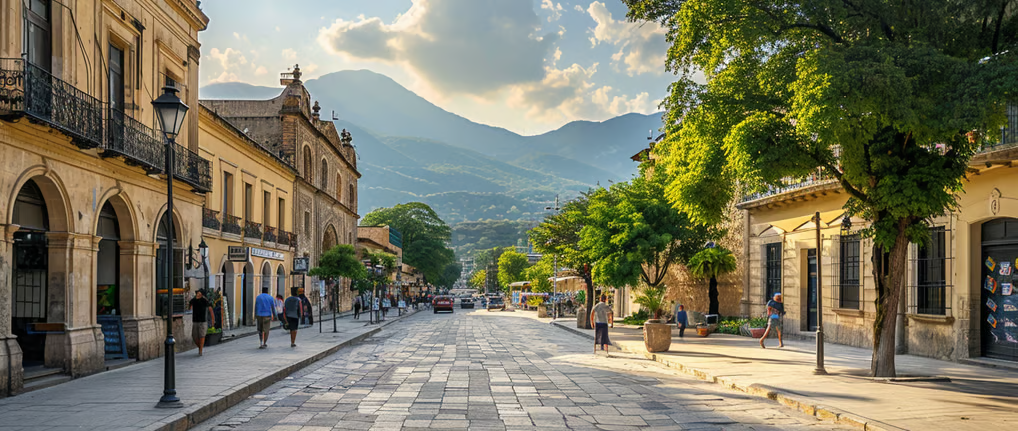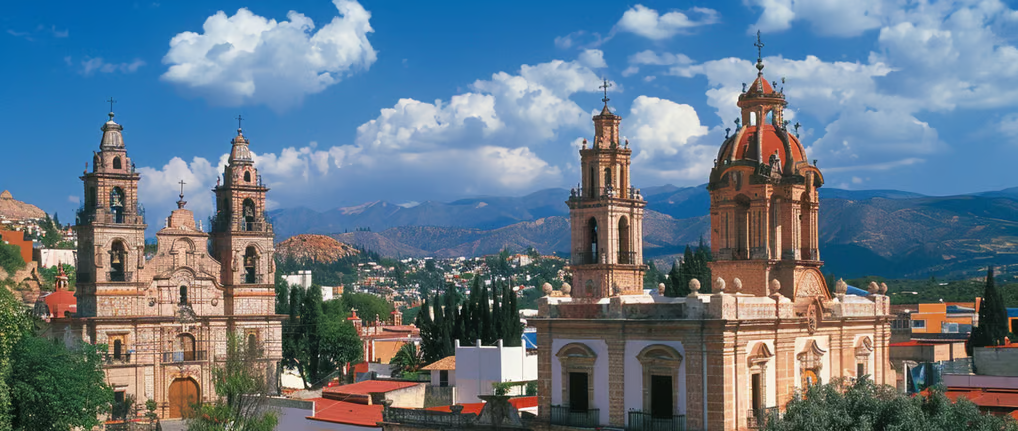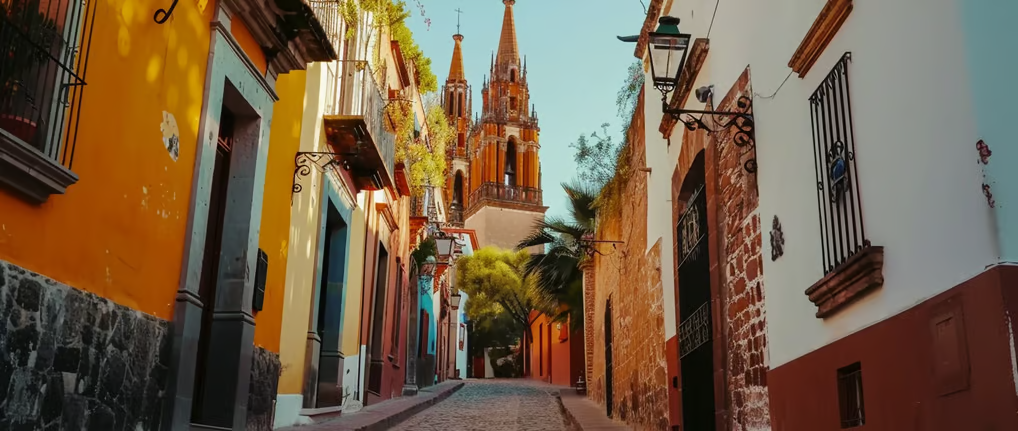Mexico's Colonial Towns: A Stroll Through History
Wander through the cobbled streets of Mexico's colonial towns, where history comes alive around every corner, showcasing a rich past through stunning architecture, vibrant town squares, and enduring traditions.
\

Mexico's colonial towns are a captivating reflection of the country's rich history. As you wander through their cobblestone streets and gaze upon their intricately designed buildings, you can't help but be transported to a time when Spanish colonizers first set foot on Mexican soil. Understanding Mexico's colonial era is essential to truly appreciate the charm and significance of these towns.
Understanding Mexico's Colonial Era
The Spanish conquest in the 16th century marked a significant turning point in Mexico's history. The arrival of Hernan Cortes and his army led to the downfall of the mighty Aztec Empire and the establishment of Spanish rule. This era had a profound impact on Mexico's culture, architecture, and way of life.
The Spanish Conquest and its Impact
The conquest brought radical changes to ca. The Spanish forced their language, religion, and customs upon the indigenous population, resulting in a fusion of indigenous and European cultures. This amalgamation created a unique blend of traditions that can still be seen in Mexico's colonial towns today.
Architecture of the Colonial Period
The architecture of Mexico's colonial period is a feast for the eyes. Magnificent churches, grand civic buildings, and charming residential houses dominate the landscape. The buildings exhibit a blend of European and indigenous architectural styles, resulting in a distinctive aesthetic that is truly awe-inspiring.
Let's delve deeper into the architectural wonders of Mexico's colonial period. The churches, in particular, stand as a testament to the rich history and religious fervor of the time. Each church tells a story, with intricate details adorning their facades. The use of vibrant colors, ornate carvings, and delicate stonework showcases the skilled craftsmanship of the indigenous artisans who worked alongside European architects.
One example of this architectural splendor is the stunning Cathedral of Mexico City, also known as the Metropolitan Cathedral. This iconic structure, built over the span of three centuries, is a harmonious blend of Gothic, Renaissance, and Baroque styles. Its towering bell towers and majestic domes dominate the city's skyline, inviting visitors to marvel at its grandeur.
But it's not just the churches that captivate the imagination. The colonial period also gave rise to magnificent civic buildings that served as symbols of Spanish power and authority. Palaces, government offices, and courthouses were constructed with meticulous attention to detail, showcasing the opulence and grandeur of the ruling elite.
One such example is the Palacio Nacional, located in the heart of Mexico City. This architectural masterpiece served as the residence of the Spanish viceroys and later became the seat of the Mexican government. Its grand facade, adorned with intricate sculptures and elegant balconies, is a testament to the wealth and influence of the colonial rulers.
As you wander through the streets of Mexico's colonial towns, you'll also come across charming residential houses that reflect the daily lives of the people during this era. These houses, known as "casonas," feature traditional courtyards, colorful facades, and ornate balconies. They provide a glimpse into the daily routines and social dynamics of the colonial society.
One such casona that stands out is the Casa de los Azulejos, located in Mexico City. This iconic building is adorned with stunning blue and white tiles, giving it a distinctive appearance. Originally built as a private residence, it now houses a renowned restaurant where visitors can enjoy a taste of Mexico's colonial past while savoring delicious cuisine.
The architecture of Mexico's colonial period is a testament to the rich and complex history of the country. It serves as a reminder of the fusion of cultures, the resilience of the indigenous people, and the enduring legacy of Spanish rule. Exploring these architectural wonders allows us to appreciate the beauty and diversity that emerged from this transformative era.

The Charm of Mexico's Colonial Towns
What sets Mexico's colonial towns apart from their modern counterparts is their timeless charm. These towns have managed to preserve their historic character while seamlessly integrating modern amenities. The moment you step into one of these towns, you are transported to a bygone era.
Distinctive Features of Colonial Towns
One of the most striking features of colonial towns is their well-preserved historic centers. The cobblestone streets, colorful facades, and picturesque squares create a charming atmosphere that is simply irresistible. As you explore, you'll also come across quaint plazas, bustling markets, and art galleries showcasing the talents of local artisans.
The Role of Colonial Towns in Modern Mexico
While their historical significance shouldn't be overlooked, Mexico's colonial towns play a vital role in modern Mexico. They are not just tourist attractions; they are living communities that provide a glimpse into Mexico's rich cultural heritage. Many of these towns have become hubs for art, music, and gastronomy, attracting both locals and international visitors alike.
Exploring Notable Colonial Towns
No visit to Mexico would be complete without exploring some of its most notable colonial towns. Here are a few that you should definitely add to your itinerary:
San Miguel de Allende: A Blend of Old and New
Nestled in the heart of Mexico's central highlands, San Miguel de Allende is a true gem. Its well-preserved colonial architecture and vibrant cultural scene make it a favorite among travelers. Don't miss a visit to the Parroquia de San Miguel Arcangel, the town's iconic pink church.
Guanajuato: A City of Tunnels and Color
Guanajuato is a city is famous for its network of underground tunnels and colorful buildings. Explore the winding streets, visit the Museo de las Momias, and take a stroll along the Callejon del Beso, the narrowest alley in Mexico.
Puebla: A Culinary and Cultural Hub
Puebla is not only known for its beautiful colonial architecture but also for its mouthwatering cuisine. Indulge in traditional dishes such as mole poblano and chiles en nogada. You can also explore the stunning Talavera tiles that adorn the facades of many buildings in the city.
Preserving the Heritage of Colonial Towns
Preserving the heritage of Mexico's colonial towns is a constant challenge. The passage of time, natural disasters, and urban development pose threats to their historic integrity. However, preservation efforts and the recognition of these towns as UNESCO World Heritage sites have played a crucial role in safeguarding their authenticity.
Conservation Efforts and Challenges
Local communities and governmental organizations have implemented various conservation initiatives to protect the architectural treasures of these towns. Restoration projects, strict building codes, and awareness campaigns have all contributed to the preservation efforts. However, balancing the needs of modern development with the preservation of historical sites remains a delicate task.
The Role of Tourism in Preservation
Tourism has played a significant role in the preservation of Mexico's colonial towns. The revenue generated from tourist visits has allowed for the ongoing maintenance and restoration of key landmarks. Responsible tourism practices, such as supporting local businesses and respecting the cultural heritage, are crucial to ensure the long-term sustainability of these towns.

Experiencing Colonial Towns: Travel Tips
Visiting Mexico's colonial towns is an enriching experience that shouldn't be missed. Here are a few travel tips to help you make the most of your journey:
Best Time to Visit
The best time to visit Mexico's colonial towns is during the dry season, which typically runs from late November to April. The weather is pleasant, and you'll have the opportunity to experience vibrant festivals and cultural events that take place during this time.
Navigating the Colonial Towns
Exploring the colonial towns can be a delightfully immersive experience. Take the time to get lost in the winding streets, discover hidden gems, and interact with the friendly locals. Consider renting a bike or hiring a local guide to gain a deeper understanding of the town's history and culture.
Must-Visit Sites in Each Town
Each colonial town has its own unique attractions. In San Miguel de Allende, don't miss the Instituto Allende, a renowned art school that hosts exhibitions and workshops. In Guanajuato, be sure to visit the Alhondiga de Granaditas, a historic building that is now a museum. And in Puebla, a visit to the Great Pyramid of Cholula, the largest pyramid in the world, is a must.
As you stroll through Mexico's colonial towns, you can't help but feel a connection to the past. The history, architecture, and culture combine to create an enchanting experience that will leave a lasting impression. So, pack your bags, immerse yourself in the charm of these towns, and embark on a journey through Mexico's rich colonial history.
Take A Stroll Through History
Mexico's colonial towns offer a unique opportunity to take a stroll through history. From the impact of the Spanish conquest to the distinctive charm of each town, these destinations are a testament to the rich heritage of Mexico. As travelers, we have the responsibility to support the preservation efforts and embrace the local culture with respect and admiration. So, why not plan your trip to one of Mexico's colonial towns today? Embark on a journey filled with architectural wonders, delicious cuisine, and cherished traditions. Mexico's colonial towns are waiting to charm you with their timeless beauty.